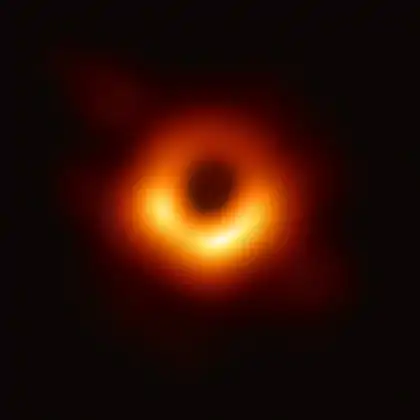Kugelblitz (astrophysics)
In theoretical physics, a Schwarzschild kugelblitz is a concentration of heat, light or radiation so intense that its energy forms an event horizon and becomes self-trapped: according to general relativity and the equivalence of mass and energy, if enough radiation is aimed into a region, the concentration of energy can warp spacetime enough for the region to become a black hole, although this would be a black hole whose original mass-energy had been in the form of radiant energy rather than matter.[1] In simpler terms, a kugelblitz is a black hole formed from radiation as opposed to matter. Such a black hole would nonetheless have properties identical to one of equivalent mass and angular momentum formed in a more conventional way, in accordance with the no-hair theorem.
The best-known reference to the kugelblitz idea in English is probably John Archibald Wheeler's 1955 paper "Geons",[2] which explored the idea of creating particles (or toy models of particles) from spacetime curvature, called geons. Wheeler's paper on geons also introduced the idea that lines of electric charge trapped in a wormhole throat might be used to model the properties of a charged particle-pair.
Kugelblitz drives have been considered as possible future black hole starship engines.[3][4]
See also
References
- Senovilla, J.M.M. (2014). "Black hole formation by incoming electromagnetic radiation". Classical and Quantum Gravity. 32 (1): 017001. arXiv:1408.2778. Bibcode:2015CQGra..32a7001S. doi:10.1088/0264-9381/32/1/017001. S2CID 119266727.
- Wheeler, J. A. (1955). "Geons". Physical Review. 97 (2): 511–536. Bibcode:1955PhRv...97..511W. doi:10.1103/PhysRev.97.511.
- 5 REAL Possibilities for Interstellar Travel on YouTube
- Lee, J.S. (2013). "The effect of Hawking Radiation on Fermion re-inflation of a Schwarzschild Kugelblitz". Journal of the British Interplanetary Society. 66: 364–376.
